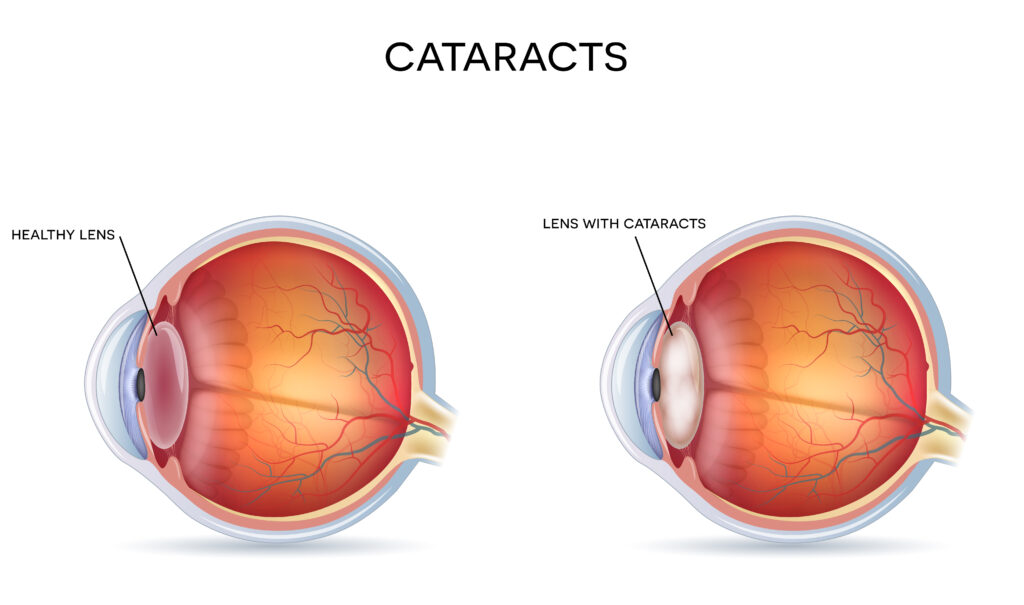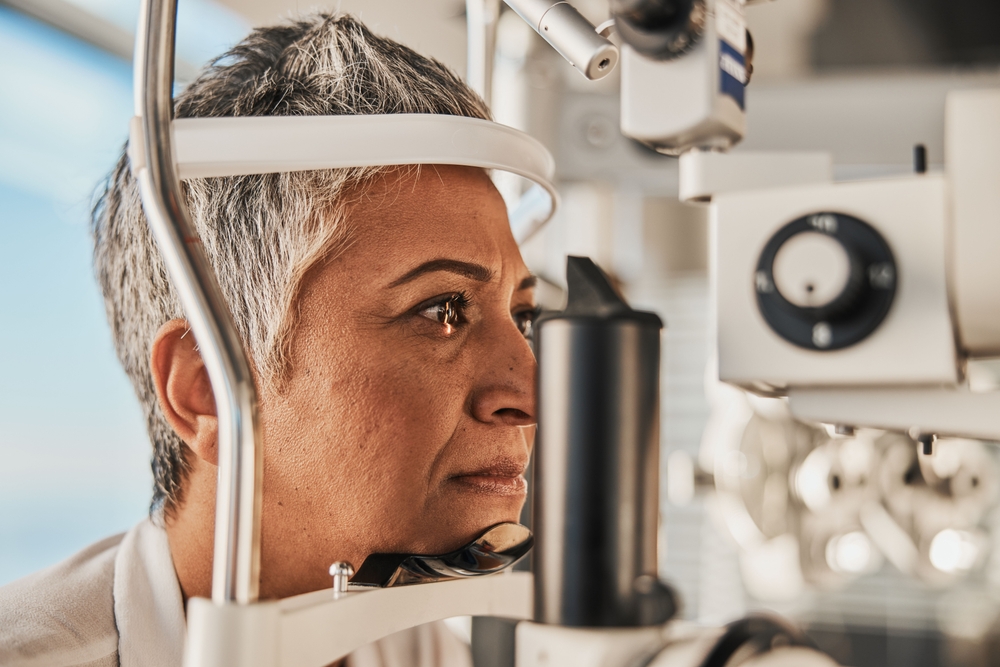
Have you had cataract surgery? After the procedure, you may be worried about your cataracts coming back.
You may have heard of secondary cataracts and are concerned that you could need cataract surgery again. But the truth is that cataracts cannot come back, and the term “secondary cataract” is more of a misnomer than anything.
Secondary cataracts aren’t cataracts at all. The good news? You don’t have to have cataract surgery to treat secondary cataracts.
You may be wondering, what are secondary cataracts if they aren’t cataracts? Keep reading to discover if cataracts can come back and to learn more about secondary cataracts!
Cataracts and Cataract Surgery

Cataracts form on the eye’s natural lens. Usually, the natural lens is clear and transparent.
Cataracts occur when the lens becomes cloudy, impacting your ability to see clearly in your eye’s natural lens. Your natural lens is supposed to be clear, but it gradually becomes more opaque when you have cataracts.
Over time if you have cataracts, your lens will become cloudier, making it hard to see through and causing several visual symptoms. The most common reason that cataracts develop is because of aging. As you get older, your risk of cataracts increases.
You’re more likely to develop cataracts after turning 40. However, you can also develop cataracts for other reasons, like not protecting your eyes from the sun, corticosteroid use, family history, or if you’re born with them.
You can develop cataracts in your forties or fifties and not realize you have them. Many patients can have cataracts for years without knowing it.
This is possible because early-stage cataracts may not have noticeable symptoms, or you may brush off symptoms or ignore them initially. However, symptoms of cataracts only get worse as they continue developing.
Cataract surgery is only recommended by cataract surgeons when your cataracts begin to negatively affect your quality of life. Cataract surgery is the only way to treat cataracts.
The procedure removes cataracts and the natural lens to help you see clearly. Removing the natural lens would leave you without a lens in your eye, but cataract surgery replaces the natural lens with an intraocular lens.
An intraocular lens (IOL) is an artificial lens that takes over the job of the once transparent and see-through lens while improving your vision.
But one key difference between an IOL and your natural lens is that a cataract cannot form on an IOL.
Because of this, it’s impossible to get cataracts after having cataract surgery. You can get a secondary cataract, but the name is misleading because it’s not a cataract.
Secondary Cataracts
Secondary cataracts are another name for posterior capsule opacification (PCO). Posterior capsule opacification sometimes occurs after cataract surgery.
It can sometimes happen right after cataract surgery or several years after the procedure. Your surgeon must enter the lens capsule to access your natural lens during cataract surgery.
The lens capsule is the thin membrane that contains your lens and where the IOL is placed after removing the natural lens. Although it’s not possible for an IOL to become cloudy or form a cataract, parts of the lens capsule can develop cloudy patches.
These patches are a simple part of the healing process after cataract surgery and are completely harmless. They can affect your vision, but their treatment is simple and easy to deal with.
Symptoms of Posterior Capsule Opacification
If you think you have posterior capsule opacification, the symptoms are usually similar to cataracts. They include:

- Blurry vision
- Light sensitivity
- Glare and halos
- Poor night vision
If you’ve had cataract surgery, you’re probably already familiar with these symptoms. It can be distressing to develop these problems with your vision after you’ve had your cataracts removed.
It’s also easy to believe your cataracts have returned, even if they haven’t. But these “secondary cataracts” are merely a side effect of the healing process of your eye having cataract surgery.
You should be aware of PCO before you have cataract surgery so you can be prepared if you develop it. Understanding that it isn’t possible to get cataracts again can give you peace of mind knowing the cause of your visual symptoms.
If your blurry vision and poor night vision are due to posterior capsule opacification, you can have it treated and get back to seeing clearly.
Posterior Capsule Opacification Treatment

While posterior capsule opacification won’t cause permanent harm to your vision, it won’t clear up on its own. It requires treatment to restore your ability to see clearly. The only way to treat PCO is to undergo a YAG laser capsulotomy.
A YAG laser capsulotomy is an in-office procedure. It only takes a few minutes and requires no downtime.
During a YAG laser capsulotomy, your eye doctor will first numb your eye with eye drops. They will then use a YAG laser to create a small opening in the capsule.
Your ophthalmologist can do this without creating an incision in your eye. YAG lasers use photo disruption, concentrating light onto a tiny, specific point without disrupting anything between the emitter and the point.
Doing this allows it to cut into the lens capsule without touching any other part of your eye, making treatment quick and easy! After creating a small opening in the lens capsule, light can filter through to your lens again, resolving any visual symptoms caused by PCO.
Within 24 hours, you should start noticing improvement in your vision. You may notice slight irritation or discomfort as the numbing eye drops wear off, but this will only last a few hours.
YAG laser capsulotomies are very low risk and an excellent way to finally achieve the crisp, clear vision you’ve been waiting for after cataract surgery. Could you need a YAG laser capsulotomy?
Learn more about them by requesting an appointment at St. Luke’s at The Villages in Lake Sumter Landing, FL, now!









